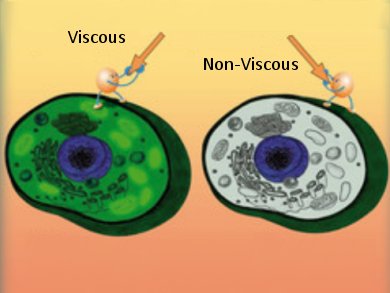Changes in cellular viscosity are related to several diseases, such as cystic fibrosis, as viscosity affects the way molecules and signals are conveyed. Existing mechanical methods for the measurement of viscosity cannot be applied at the cellular level.
Xiaojun Peng and colleagues, Dalian University of Technology, China, have developed a fluorescent probe coupled with a molecular rotor to measure intracellular viscosity. The probe consists of a dye substituted with an aldehyde group (CHO). Rotation of the CHO in non-viscous media results in weak fluorescence. However, when rotation is restricted, as in viscous media, the emission is enhanced. As the sensor has two adsorption and emission maxima, it can be used for both ratiometry imaging and fluorescence lifetime imaging. This makes it the first molecular rotor capable of dual mode fluorescence imaging and is of interest for determining the pathologies of diseases.
Image: (c) Wiley-VCH
- Fluorescence Ratiometry and Fluorescence Lifetime Imaging: Using a Single Molecular Sensor for Dual Mode Imaging of Cellular Viscosity
X. Peng, Z. Yang, J. Wang, J. Fan, Y. He, F. Song, B. Wang, S. Sun, J. Qu, J. Qi, M. Yan,
J. Am. Chem. Soc. 2011.
DOI: 10.1021/ja1104014



